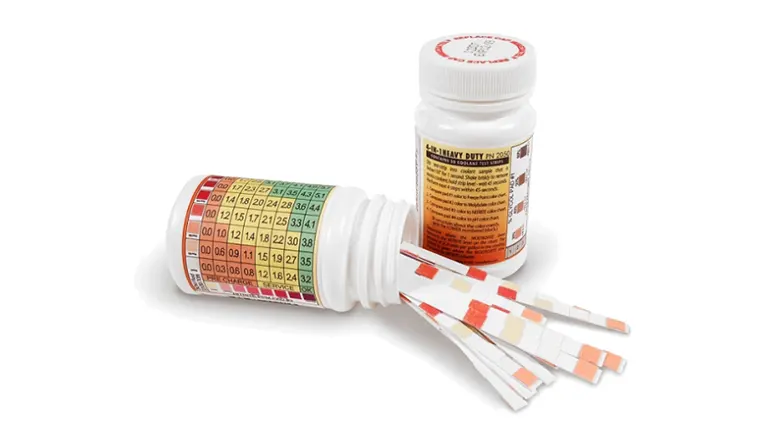Ever glanced at your Ford F-350 or F-250 dashboard and seen the dreaded “Check Coolant Additive” message? Don’t panic, fellow trucker. This guide will navigate you through the murky waters of this warning, equipping you with the knowledge to tackle it head-on.
Understanding the “Check Coolant Additive” Message
First things first, let’s differentiate this message from the more common “Low Coolant Level” warning. A low coolant level indicates, well, a lack of coolant in the system, often accompanied by overheating issues.
The “Check Coolant Additive” message, however, points to a different issue: the specific additive within your coolant, crucial for corrosion prevention and optimal engine performance, is running low. Think of it as the secret sauce to your engine’s smooth operation.
Diving Deep: Checking Coolant Additive Levels
Before adding anything, let’s assess the situation. Pop the hood and locate the coolant reservoir. It’s typically a translucent tank near the radiator, easily identifiable by its bright orange or yellow coolant. Take a good look:
- Color and Clarity: Is the coolant a vibrant orange or has it turned murky brown? Discoloration could indicate contamination, warranting a professional flush.
- Level Check: Look for markings on the reservoir. If the coolant level falls below the “MIN” line, you might need to top it up before adding the additive.
Deeper Dive: The Test Strip
For a more precise diagnosis, grab a coolant additive test strip. These handy kits, readily available at auto parts stores, work like magic. Dip the strip into the coolant, wait a few minutes, and voila! The color chart on the packaging will tell you the additive level: green for good, yellow for low, and red for dangerously depleted.

Adding Coolant Additive (if needed)
Remember, not all additives are created equal. Stick to Ford-approved coolant additive specifically formulated for your F-350 or F-250. Different types of additives exist, so ensure compatibility with your truck’s existing coolant. Check the owner’s manual or consult your friendly neighborhood Ford dealership for guidance.
Adding the Right Amount:
With the right additive in hand, consult the instructions on the bottle and the coolant level in your reservoir. If the additive level is slightly low, you might only need a partial bottle. Never overfill, as excess additive can harm your engine. Pour slowly and carefully, ensuring none spills onto the surrounding components.
Safety First:
Coolant is toxic, so wear gloves and eye protection while handling it. Dispose of any excess or spilled coolant responsibly, never down the drain.
Resetting the “Check Coolant Additive” Message
Once you’ve addressed the low additive level, you can reset the warning message. Consult your owner’s manual for specific instructions. Remember, this reset is merely a temporary fix. Addressing the underlying cause, whether it’s a leak or sensor malfunction, is crucial for long-term engine health.
Troubleshooting Persisting Issues
- Warning Won’t Go Away: If the message persists after adding coolant, a sensor malfunction or leak could be the culprit. Consult a qualified mechanic for diagnosis and repair.
- Leaking Coolant: Look for puddles of coolant under your truck or coolant stains around the reservoir. Early detection and repair of leaks are crucial to prevent engine damage.
- Overheating Engine: This is a serious issue, and a low coolant additive level could be a contributing factor. Pull over immediately, turn off the engine, and seek professional help.
Top Tips for a Happy Truck
- Choose the Right Additive: Always opt for Ford-approved coolant additive for optimal compatibility and performance.
- Preventative Maintenance: Regularly check and maintain your coolant levels and overall cooling system for peak engine health.
- Resources at Your Fingertips: Ford offers comprehensive service manuals and troubleshooting guides online. Don’t hesitate to utilize these valuable resources for DIY maintenance or to prepare for your next mechanic visit.
Remember, a well-maintained cooling system is the lifeblood of your Ford F-350 or F-250. By understanding the “Check Coolant Additive” message and taking the necessary steps, you can keep your truck purring smoothly for miles to come. So, grab your tools, consult this guide, and tackle that warning message with confidence!

John Smith, a Los Angeles-based car specialist and automotive writer, boasts over 20 years in the industry. With a background as a master technician and a decade-long writing stint at notable automotive publications, John now shares his expansive knowledge on CarFinite, simplifying car maintenance for readers.

